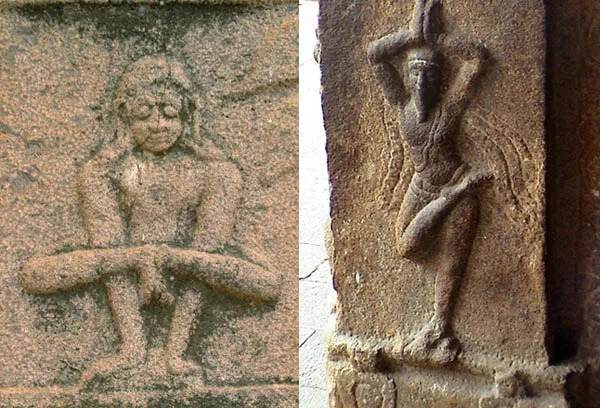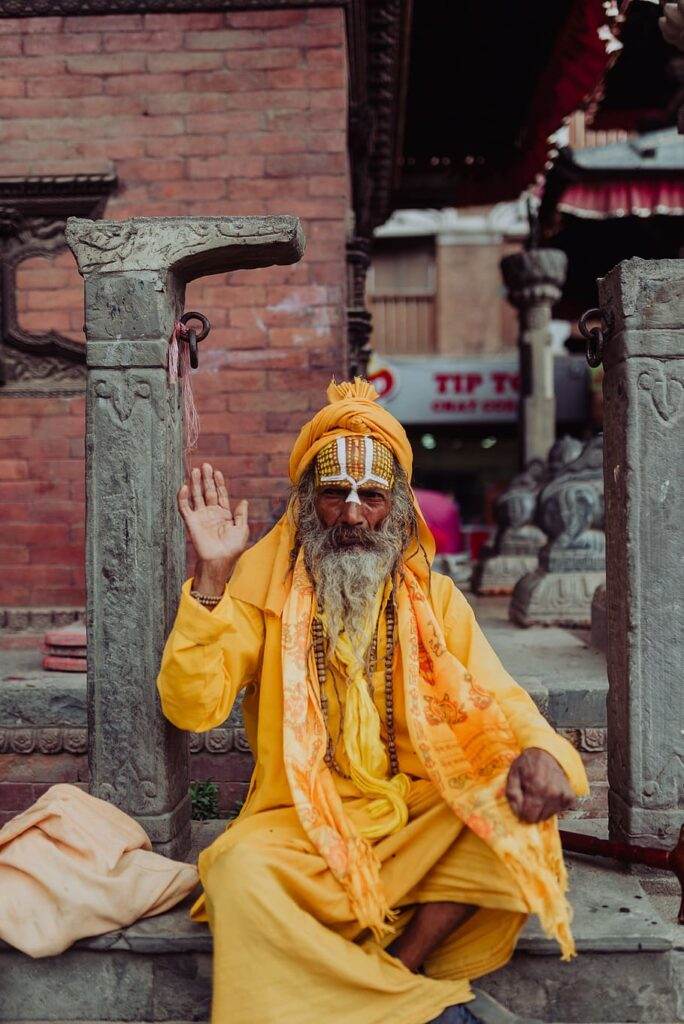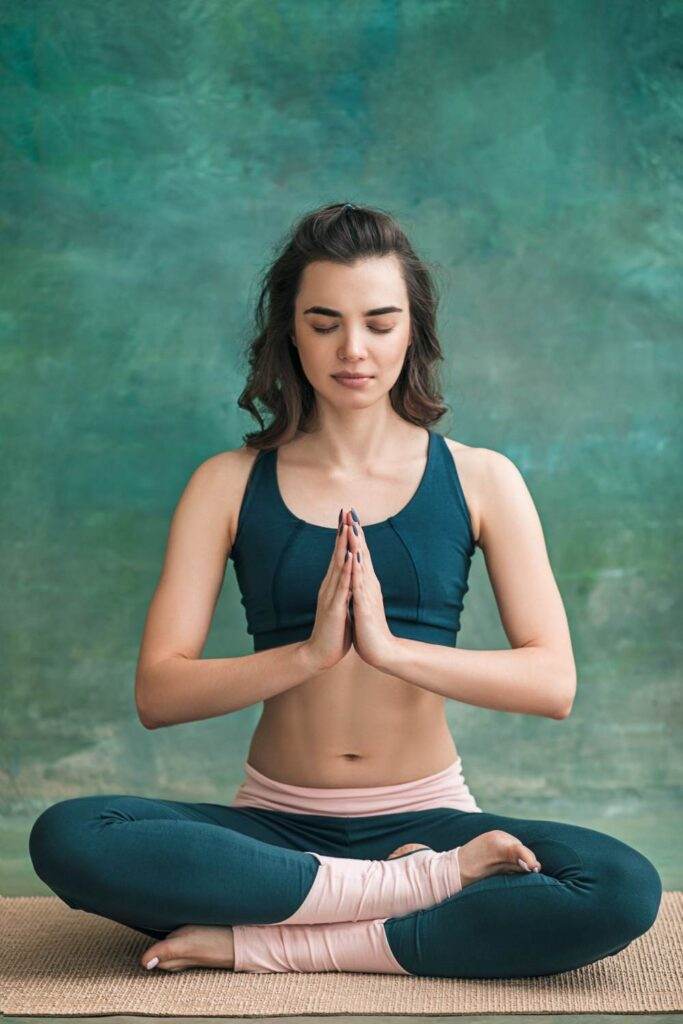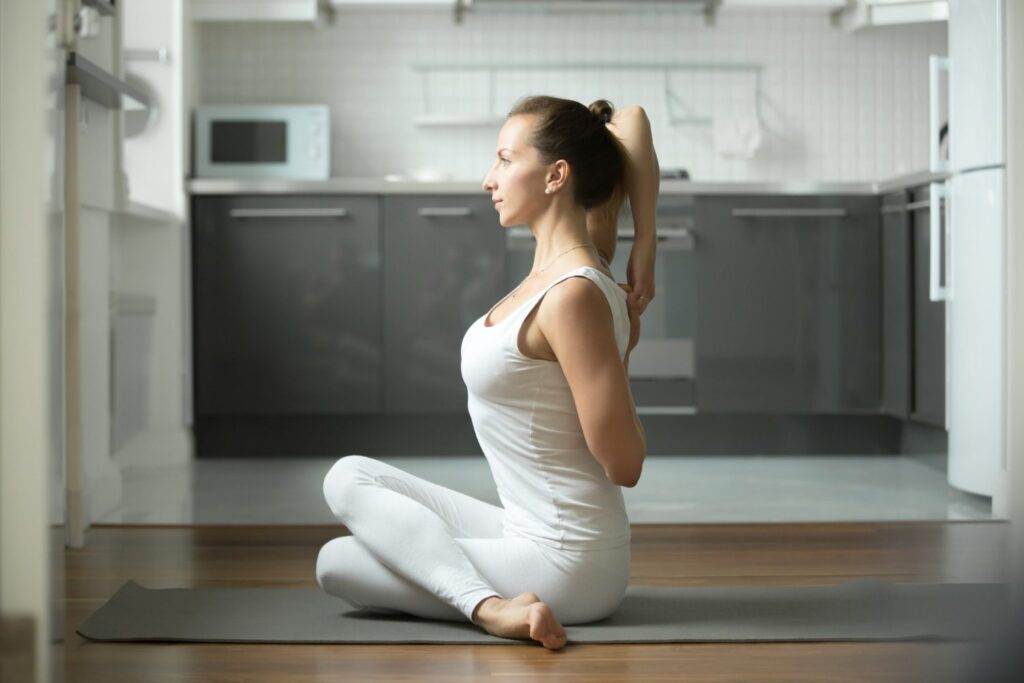Discover the Roots of Yoga: Ancient Asanas from the Indus Valley Civilization
December 19, 2023 2023-12-19 23:24Discover the Roots of Yoga: Ancient Asanas from the Indus Valley Civilization

Discover the Roots of Yoga: Ancient Asanas from the Indus Valley Civilization
Studying ancient asanas from the Indus Valley Civilization is an incredibly important practice for anyone interested in yoga poses. These ancient asanas have been passed down through generations and hold a wealth of wisdom about how to connect with our bodies, minds, and spirits. By studying these poses, we can learn more about ourselves and our place in the world around us. We can also gain insight into the ways that our ancestors connected with their own bodies and communities through movement and meditation. And perhaps most importantly, by practicing these ancient asanas ourselves today, we honor the traditions of those who came before us while also creating new connections between past and present. Whether you’re a seasoned yogi or just starting out on your journey towards mindfulness and wellness, this article is for you and will help you study ancient asanas, which is an essential part of deepening your practice and understanding the rich history behind this powerful discipline.
Historical Context: The Indus Valley Civilization
Yoga has been an integral part of ancient civilizations, and its evidence can be traced back to the Indus Valley Civilization. The practice of yoga in that period was not just limited to asanas or poses but also included pranayama (breathing exercises) and meditation. Excavations have revealed artifacts depicting people in different yoga postures, indicating the importance it held in their culture. The prevalence of yoga in ancient civilization is further evidenced by texts like Patanjali’s Yoga Sutras, which expound on various aspects of yogic practices. The influence of yoga on Indian culture is undeniable, with festivals like International Day of Yoga celebrated worldwide today. Hence, we can see how the practice of yoga has been woven into our society since time immemorial and continues to impact our lives positively even now.
Ancient Yoga: Understanding the Indus Valley Connection
The connections between this civilization and yoga practices are believed to be deep-rooted. It is thought that yogic techniques were an integral part of their daily lives as evidenced by the presence of several depictions of figures performing various postures resembling those found in contemporary yoga practice. Many scholars believe that these early references to yoga provide strong evidence for its origins in ancient Indian culture. Furthermore, it suggests that there might be a shared history between different civilizations regarding spiritual practices such as meditation and yoga, emphasizing the interconnectedness between cultures throughout human history.
The role of yoga in the daily life of the people in the Indus Valley Civilization was significant and profound. It was practiced by people from all walks of life, including kings, queens, farmers, merchants, and laborers. It was considered to be a way of life rather than just an exercise routine. The practice of asanas helped them to maintain a healthy body and mind, as well as fostered inner peace and spiritual growth. It also played a vital role in their social lives; it brought people together for group practices that promoted unity and community bonding. Additionally, many aspects of yoga were incorporated into everyday activities such as cooking, cleaning, and even farming. With its emphasis on mindfulness and self-awareness, yoga taught them how to live in harmony with nature while simultaneously developing a deeper understanding of themselves. Overall, the role of yoga in daily life had far-reaching implications for both individual well-being and societal cohesion within the Indus Valley Civilization.
Unearthing Ancient Asanas: Archaeological Evidence
Yoga in the Indus Valley Civilization is a fascinating topic for researchers who are interested in understanding ancient Indian civilization. Excavated artifacts and depictions of yoga poses discovered from different sites of the Indus Valley Civilization reveal that yoga was an integral part of their lifestyle. Many figurines made of terracotta, bronze, and stone depict yogic postures like Padmasana (lotus pose), Bhujangasana (cobra pose), Vrikshasana (tree pose), etc. The existence of these artifacts not only reveals that people practiced yoga but also suggests that it had a significant impact on their physical as well as psychological wellbeing. Moreover, the fact that such objects were found at various cities across the region shows how widespread this practice was among the people residing in this area during those times. Many seals were also found alongside other forms of artwork, such as terracotta figurines performing various yogic poses. Additionally, many artifacts have been uncovered with symbols resembling those used in modern-day Yoga practices, including chakras and the Om symbol. Other excavations portray people performing more complex postures like dhanurasana (bow pose) and vrikshasana (tree pose). The depictions also show yogis holding objects such as incense burners and water vessels which suggest that these practices were incorporated into religious ceremonies. Through these findings, it is evident that yoga played a significant role in the spiritual lives of ancient Indus Valley civilizations and serves as a testament to its enduring power and influence throughout history.
The ancient practice of yoga has been depicted in various forms throughout history, and seals from the Indus Valley Civilization provide us with a rich source of information on this subject. The yoga poses in seals offer a glimpse into the daily life and spiritual beliefs of these people, who lived over 4,500 years ago. These small stone objects depict human figures in intricate postures that are recognizable as asanas of yoga poses such as Padmasana (Lotus Pose) and Siddhasana (Perfect Pose). Pottery and figurines also showcase similar postures indicating the prevalence of yoga in their culture. Further analysis reveals that some seal depictions may have symbolic meaning rather than simply depicting physical exercises. For example, one seal depicts three seated figures with raised arms – possibly signifying worship or prayer instead of practicing an asana pose. Overall, studying these ancient artifacts offers insight into the role that yoga played within society at this time period and how it is still practiced today by many around the world for health benefits both mental and physical alike.
Exploring the Indus Valley Asanas
The Indus Valley Civilization’s asanas are a set of yoga postures that have been passed down from generation to generation and continue to be practiced to this day. These asanas represent an integration of mind, body, and spirit and help achieve physical strength, mental clarity, and inner peace. The asanas that we will cover are:
• Natarajasana
• Pashupati Seal Pose
• Ardha Padmasana or half-lotus pose
• Gomukhasana or Cow Face Pose
Each posture serves a unique purpose in balancing our well-being holistically. We will delve deeper into each pose’s meaning & benefits so you can incorporate them into your own practice.
The Pashupati Seal Asana
The Pashupati seal pose is a well-known depiction of an ancient deity found in the Indus Valley Civilization. The image shows a seated figure with three faces and four animals surrounding him, which are believed to be a bull, elephant, tiger, and rhinoceros. The description of the pose indicates that it represents Hindu god Shiva in his role as Lord of Animals or Pashupati. The significance of this depiction lies not only in its artistic beauty but also in its religious symbolism. It suggests that the people who created this civilization had developed a complex theology centered around nature worship and animalism. Additionally, some scholars posit that this seal might have been used as an amulet or talisman for protection against evil spirits or disease since it was often buried with the dead during funeral rites.
 Pashupati Pose
Pashupati Pose
The Pashupati seal pose, also known as the seated forward bend pose, is an excellent yoga posture that provides numerous benefits to the body and mind:
• One of the most significant advantages of this pose is its ability to calm and soothe the nervous system, making it ideal for individuals with anxiety or stress-related issues.
• Regular practice of this pose can help improve flexibility in the hips, hamstrings, and lower back muscles while strengthening your core and spine.
Interestingly enough, there are several variations of this posture that you can try out depending on your level of experience or comfortability. Some popular ones include:
• Incorporating a twist by placing one hand behind you while reaching up with your other arm towards the ceiling.
• Bending from side to side instead of forwards.
Regardless of which variation you choose to practice regularly – or if you stick with just one – doing so will undoubtedly lead to improved physical health as well as mental clarity over time.
Modern interpretations of the pashupati seal pose have revealed fascinating insights into its potential applications in contemporary times. Today, many modern practitioners integrate this meditative pose into their yoga routines for its ability to calm and center the mind while also strengthening and stretching various muscle groups throughout the body. Additionally, some scholars suggest that the symbolic meaning behind this posture can be extended beyond traditional Hindu mythology to express themes such as unity and interconnectedness with all beings – a message that resonates deeply with our current global community in an era where social justice and environmentalism are increasingly pressing concerns. Overall, it is clear that despite being thousands of years old, the pashupati seal pose remains relevant today thanks to its adaptability and inherent symbolism.
The Natarajasana (Lord of the Dance Pose)
Natarajasana, also known as the Lord of the Dance Pose, is a popular yoga posture that has been practiced for centuries. This pose is inspired by the Hindu God Shiva, who is depicted as Nataraja – the cosmic dancer. In this pose, practitioners stand on one leg while stretching their other leg behind them and bending it upwards towards their back with one hand holding onto their foot and another arm extended in front of them. The posture represents balance, strength, gracefulness and determination – all qualities embodied by Lord Shiva himself. Historically speaking, this ancient pose was used to help yogis cultivate a deeper connection to spirituality and tap into their inner power through physical movement.
This pose represents the Hindu god Shiva in his cosmic dance from – dancing on a demon to symbolize triumph over evil and ignorance. Symbolically it teaches us to embrace our own divine nature within ourselves by finding equilibrium between opposing forces such as light and dark or good and evil which are ever-present around us. It encourages us to surrender our ego-driven desires so we can connect with something higher than ourselves; this could be anything from God to Universal Consciousness depending upon your personal beliefs.
Modern practice has embraced the ancient art of yoga, and with it, the Natarajasana or Lord of the Dance Pose. This pose requires balance and strength, making it a challenging but rewarding addition to any yoga practice. The benefits are numerous:
• Improved posture
• Increased focus and concentration
• Flexibility in the hips and thighs
• Strengthened ankles and calves
• Help release tension in the shoulders and chest
• Better digestion
Modern practitioners have adapted variations to suit different levels of ability – from beginners using a wall for support to advanced yogis adding twists into the pose for an even greater challenge. With regular practice of Natarajasana comes not only physical benefits but also mental clarity as you find yourself fully present in your body during this graceful movement.
The Ardha Padmasana (Half Lotus Pose)
The pose involves sitting cross-legged with one foot placed on the opposite thigh and the other foot resting on the ground below. This position allows for deep relaxation while simultaneously strengthening the body’s core muscles. Symbolically, Ardha Padmasana represents balance and harmony between opposing forces – such as male and female energies or light and dark aspects of our psyche. It is said to activate our inner wisdom and connect us with higher consciousness, helping us to achieve unity within ourselves and with others.
Ardha Padmasana (Half- Lotus Pose)
This popular yoga posture offers numerous physical and mental benefits to the practitioner:
• Stretches the hips, knees, ankles, and thighs while strengthening the spine and stimulating the abdominal organs.
• Improves blood circulation throughout the body and enhances flexibility in these areas.
• Practicing this pose can help calm the mind by reducing stress and anxiety levels through deep breathing techniques used during meditation practice.
• It promotes focus and concentration by encouraging practitioners to stay present in their bodies while holding this challenging posture for extended periods of time.
Modifications and variations of the pose can be made to accommodate each individual’s abilities and needs:
• For beginners, sitting on a folded blanket or block may help raise their hips and provide extra support for their knees.
• As they progress, they can work towards bringing their foot closer to their hip in the lotus position.
• For those with tight hips or knee issues, the pose can be modified by crossing one ankle over the opposite thigh instead of placing it in the lotus position.
• Another variation includes extending one leg out straight while keeping the other in half lotus position for a less intense stretch.
With these modifications and variations available, practitioners of all levels can safely experience the benefits of The Ardha Padmasana without risking injury or discomfort.
The Gomukhasana (Cow Face Pose)
The name “Gomukhasana” comes from two Sanskrit words: “gomukha,” which means cow face, and “asana,” meaning pose or posture. It is a yoga posture that requires a great deal of flexibility and strength. This pose involves crossing one leg over the other while bringing both arms behind the back to clasp hands. The bottom foot should be positioned near the opposite hip with the knee pointing forward and top foot placed on top of it. As you settle into this position, you’ll feel an intense stretch in your hips, thighs, and shoulders. It’s important to keep your spine straight without hunching forward or backwards during this pose.
The Gomukhasana, also known as the Cow Face Pose, is a popular yoga posture that has been practiced for centuries. Its historical origins can be traced back to the Indus Valley Civilization when yogis would use this pose as part of their daily routine to achieve spiritual enlightenment. According to some texts, this pose was traditionally used for purification purposes and was believed to cleanse impurities from the body by facilitating breath work. This pose is believed to have cultural significance in Hindu mythology where cows are considered sacred animals and revered as symbols of purity, gentleness, and motherhood.
The Gomukhasana is a highly beneficial yoga posture with several physical advantages:
• Firstly, it helps to stretch and strengthen the shoulders and upper back while increasing flexibility in these areas.
• Secondly, this pose stretches the hips and thighs, which can be particularly helpful for people who sit all day or have tight hip flexors.
• Additionally, practicing this asana regularly improves posture by aligning the spine and reducing tension in the neck and lower back.
When performing this pose correctly, there are several alignment cues to keep in mind:
• Begin by placing one foot over the opposite thigh ensuring that both knees are stacked on top of each other.
• Allow your sitting bones to remain grounded on your mat before raising your arms overhead and clasping them behind you with one hand placed between your shoulder blades from below while simultaneously bringing another arm behind from above to grab hands.
• To maintain proper alignment throughout this pose try not to hunch forward or collapse into your chest but instead focus on drawing shoulder blades together creating a lift in heart space while keeping chin tucked towards chest maintaining lengthened neck muscles at all times.
The integration of The Gomukhasana (Cow Face Pose) into a modern yoga practice has become increasingly popular due to its numerous benefits for the body, mind and soul. This pose is an effective way to stretch and strengthen the shoulders, arms, hips, thighs and ankles while also improving posture. It opens up the chest area which helps increase lung capacity leading to better breathing patterns. Additionally, this pose helps stimulate blood flow throughout the body which in turn can bring about mental clarity and reduce anxiety levels. When integrated into a modern yoga practice it can be modified with props such as straps or blocks making it accessible for all levels of practitioners regardless of their flexibility level. By incorporating this pose into one’s regular practice individuals will undoubtedly reap its physical and emotional rewards over time.
The Influence of Ancient Asanas on Modern Yoga
The influence of ancient asanas on modern yoga is undeniable. Asanas, or physical postures, have been a key element of yoga practice for thousands of years. Ancient yogis developed these postures not only to strengthen and stretch the body but also to prepare the mind for meditation and spiritual growth. Today, many modern styles of yoga – from Vinyasa to Hatha – incorporate these ancient poses into their sequences. While some traditional asanas remain largely unchanged, others have evolved over time with new variations being added all the time. The influence of ancient asanas can be seen in everything from the names given to certain poses (such as downward-facing dog) to the way they are taught and practiced today. For many practitioners, incorporating these timeless postures into their daily routines has become an essential part of their overall wellness practice.
The lineage of asanas, or yoga postures, can be traced back thousands of years to ancient India. The earliest references to yoga come from the Rigveda, a collection of sacred Hindu texts that date back to around 1500 BCE. These texts describe various physical and mental practices aimed at achieving spiritual enlightenment, including meditation, breath control, and body postures. Over time, these postures evolved into more complex sequences known as asanas. Many of the most popular modern yoga poses have their roots in these ancient traditions; for example, downward-facing dog is believed to have been inspired by a posture called adho mukha svanasana described in the Hatha Yoga Pradipika text written in the 15th century CE. Today’s practitioners continue to explore and expand upon this rich lineage of asanas through new variations and adaptations that reflect contemporary lifestyles and needs.
When it comes to yoga, there is a rich history and tradition of ancient asanas that have been passed down from generation to generation. Incorporating these time-honored poses into contemporary yoga classes can add depth and meaning to the practice. Ancient asanas such as Padmasana (Lotus Pose), Bhujangasana (Cobra Pose) and Virabhadrasana (Warrior Pose) provide a foundation for modern practitioners to connect with the roots of yoga while at the same time allowing them to explore their own unique expression. By integrating these postures into class sequences, teachers can offer students a deeper understanding of the origins of yoga while also providing them with an opportunity to deepen their physical practice through exploration of both traditional and contemporary poses. Moreover, incorporating ancient asanas allows practitioners to tap into the spiritual aspects of yoga which are central to its philosophy by connecting them with their own inner self in a way that brings harmony between mind, body, and spirit.
Conclusion
As the practice of yoga has evolved, ancient asanas from the Indus Valley Civilization have remained an essential aspect of its landscape. Their relevance in today’s yoga landscape cannot be overstated, as they serve as a bridge between modern-day practitioners and the rich history and culture of this timeless practice. The fundamental principles that underlie these postures continue to shape contemporary practices, providing a foundation upon which new generations can build their own understanding and interpretation of yoga. By studying ancient asanas, we gain insight into the physical and mental benefits that come from aligning our bodies with nature’s rhythms while simultaneously experiencing deep relaxation and rejuvenation. Moreover, by incorporating these postures into our daily routines, we also connect with a lineage of yogis who have practiced for centuries before us; learning from them through their teachings passed down over time. In short, ancient asanas are not just relevant but vital to the continued growth and evolution of yoga in today’s world.
Search
Wellness Topics
This Just In
- Reimagining Traditional Asanas: Modern Variations and Adaptations December 21, 2023
- Iconic Asanas from Classical Yoga Texts: Patanjali and Beyond December 21, 2023
- Exploring the Benefits of Asanas: The Path to Holistic Well-Being December 21, 2023
- The Future of Asanas: Exploring Emerging Practices and Innovations December 21, 2023
- Discovering Yoga’s Roots: Asanas in Vedas and Upanishads December 21, 2023




